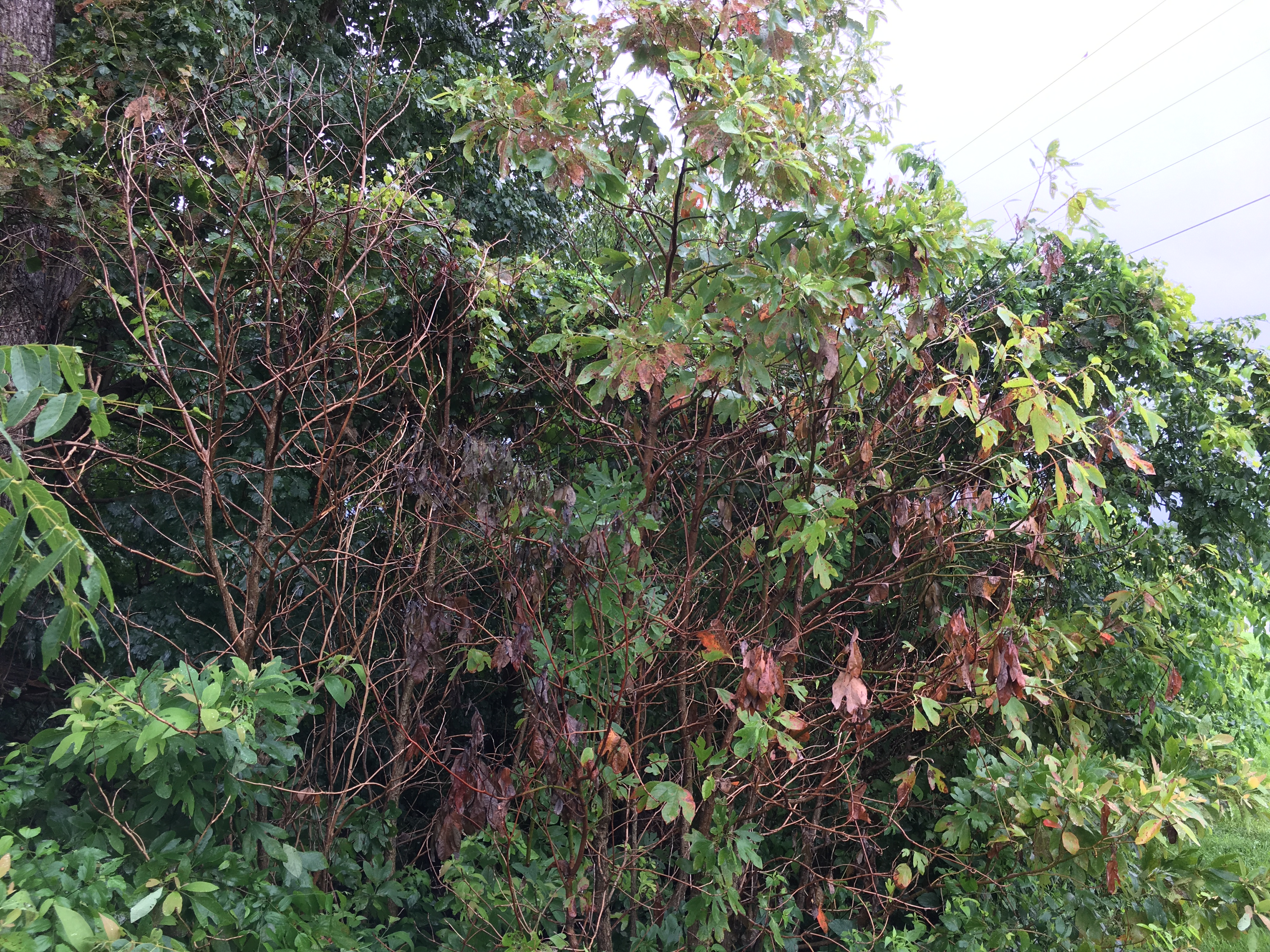Laurel wilt disease expands encroachment on state trees
Laurel wilt disease expands encroachment on state trees


For almost 20 years, forests in the Southeast have struggled against laurel wilt disease. A vascular wilt disease, Laurel wilt is caused by the fungus Raffaelea lauricola that is spread by the wood-boring redbay ambrosia beetle, which are both considered exotic, invasive species. Mainly affecting redbay laurel, sassafras, spicebush and avocado trees, it has decimated millions of trees since its inception into the country in the early 2000s. Now it is beginning to make further encroachment into the Bluegrass State.
“Those trees have very little defenses to them, so it’s been a huge problem killing millions of them,” said Ellen Crocker, assistant professor in the University of Kentucky Department of Forestry and Natural Resources.
One of the largest concerns about the disease in Kentucky is its impact on sassafras. laurel wilt disease can quickly kill the tree by cutting off its circulation by infecting the plant’s xylem, which keeps it from accessing water, essentially choaking it. Tree mortality occurs quickly , often just weeks to months after initial infection. In most diseased trees and shrubs, the fungus will cause distinctive, dark-staining streaks within the sapwood.
“If you go to any of the counties that currently have it and you're driving along the side of the road, you'll see dead sassafrass,” said Crocker, a faculty member in the UK College of Agriculture, Food and Environment. “The early signs might be wilting of leaves, hence the name lLaurel wilt, as well as early fall leaf color. The trees will have a beautiful red color, like fall foliage color, except extremely early. That's actually a sign of water stress to the tree. The fungus in there is clogging it up and stopping the circulation of water.”
First signs of the disease in Kentucky were discovered in 2019 in Christian, Todd and Logan counties. The next year, it had increased its reach mostly to surrounding counties, however, some was reported as far north as Jefferson County.
“The best way to prevent laurel wilt from spreading is not to move firewood or other potentially contaminated plants,” said Crocker. “For firewood, buy local and burn local. It is very hard to tell if wood you are moving around is harboring hitchhiking invasives, whether it’s laurel wilt or something else we don’t want.”
Crocker said that the disease is so new, there are still many unanswered questions. However, research is currently underway to find ways of treating individual trees for the disease, some of which she hopes to enlist the public’s help.
On Sept. 13, University of Kentucky Forest Health Extension and partners will have a free three-hour online training class over Zoom featuring speakers who will discuss various aspects of laurel wilt disease such as its spread and management. On Sept. 21, they will also host a field component in Christian County so that the public can see the disease firsthand and learn how to effectively collect samples.
For more information on laurel wilt disease, visit https://forestry.ca.uky.edu/laurel-wilt. To register for the free trainings, visit http://www.tinyurl.com/LWD2021.